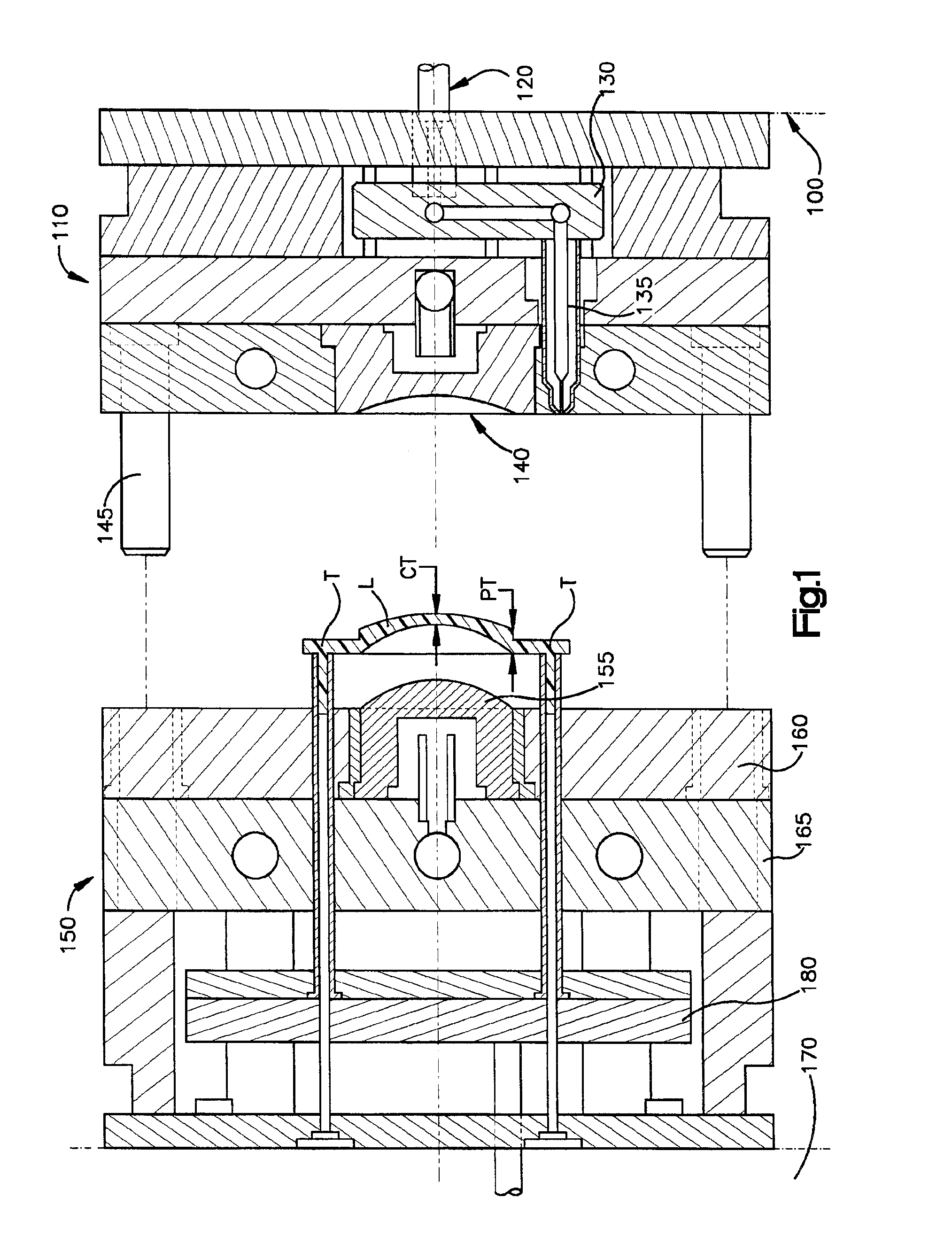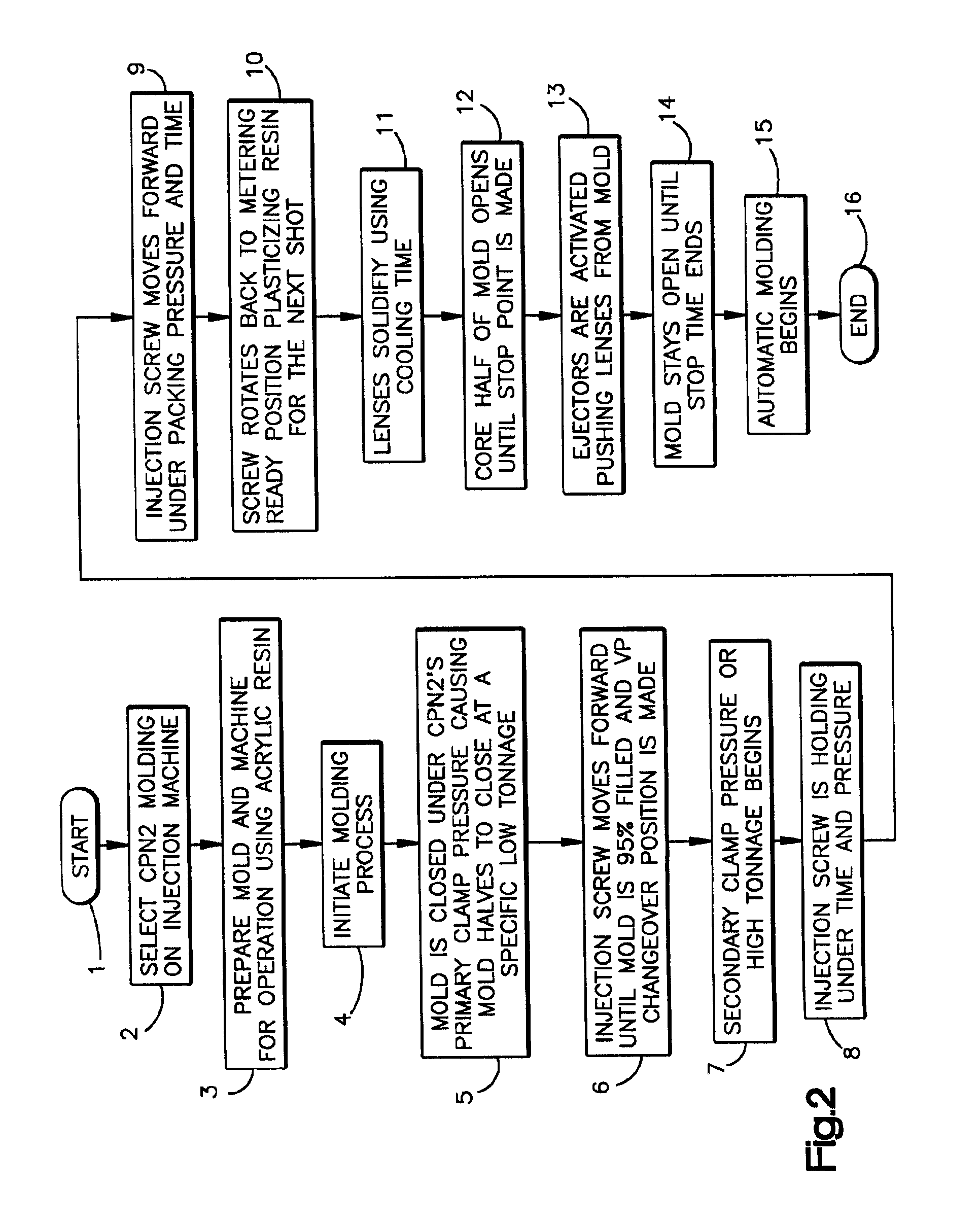Stress-relieved acrylic optical lenses and methods of manufacture by injection coining molding
- Summary
- Abstract
- Description
- Claims
- Application Information
AI Technical Summary
Benefits of technology
Problems solved by technology
Method used
Image
Examples
Embodiment Construction
The methods of the present invention can be used in connection with different types of injection molds, including conventional two-plate or runnerless molds, and three-plate injection-coining molds. As used herein, the term “injection-coining” refers to the control of a moveable half or intermediate cavity plate of a mold assembly, relative to a stationary plate of the mold assembly, by which the moveable half or component or plate of the mold assembly is controlled to move the core plate to apply a coining stroke relative to the stationary half of the mold, to densify material within the mold cavity.
An injection-coining lens molding process of the invention is able to be carried out with a conventional two plate or “runnerless” mold, as depicted in FIG. 1, with a stationary A half 110 attached to a stationary platen 100 of an injection molding machine. A mold material injection screw (connected to a plasticating unit including an injection unit having a heated extruder barrel, hopp...
PUM
| Property | Measurement | Unit |
|---|---|---|
| Thickness | aaaaa | aaaaa |
| Thickness | aaaaa | aaaaa |
| Temperature | aaaaa | aaaaa |
Abstract
Description
Claims
Application Information
 Login to View More
Login to View More - R&D
- Intellectual Property
- Life Sciences
- Materials
- Tech Scout
- Unparalleled Data Quality
- Higher Quality Content
- 60% Fewer Hallucinations
Browse by: Latest US Patents, China's latest patents, Technical Efficacy Thesaurus, Application Domain, Technology Topic, Popular Technical Reports.
© 2025 PatSnap. All rights reserved.Legal|Privacy policy|Modern Slavery Act Transparency Statement|Sitemap|About US| Contact US: help@patsnap.com



